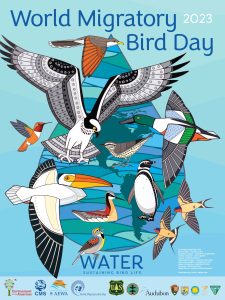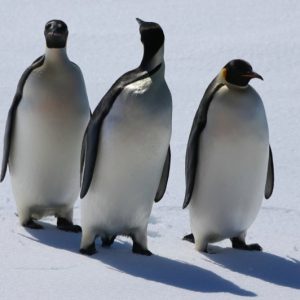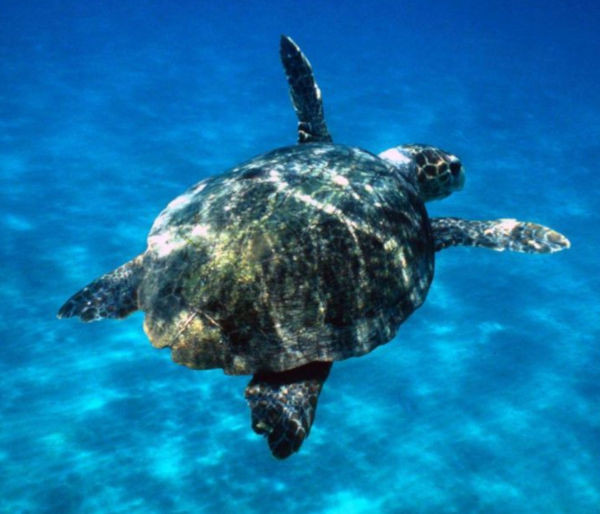image-i-nations trésor
habitat
World Cities Day – 31 October 2023
 Background
Background
The United Nations General Assembly designated 31 October as World Cities Day, by its resolution 68/239. The Day is expected to greatly promote the international community’s interest in global urbanization, push forward cooperation among countries in meeting opportunities addressing challenges of urbanization and contributing to sustainable urban development around the world.
Urbanization provides the potential for new forms of social inclusion, including greater equality, access to services and new opportunities, and engagement and mobilization that reflects the diversity of cities, countries and the globe. Yet too often this is not the shape of urban development. Inequality and exclusion abound, often at rates greater than the national average, at the expense of sustainable development that delivers for all.
Urban October was launched by UN-Habitat in 2014 to emphasize the world’s urban challenges and engage the international community towards the New Urban Agenda.
Sustainable Development Goal 11, which formulates the ambition to make cities and human settlements inclusive, safe, resilient and sustainable – underlying the relevance of UN-Habitat’s mission. Inequalities in cities have grown since 1980. The world largest cities are also often the most unequal, and this year’s theme is embraced by the action and implementation of the New Urban Agenda, which is putting the topic of inclusive cities as one of the main pillars for the urban shift.
In October 2016, the HABITAT III Conference, held in Quito, adopted a new framework, which will set the world on a course towards sustainable urban development by rethinking how cities are planned, managed and inhabited. The New Urban Agenda will set the pace on how to deal with the challenges of urbanization in the next two decades, and is seen as an extension of the 2030 Agenda for Sustainable Development, agreed on by the 193 Member States of the UN in September 2015.
Source: Text & IMage: https://www.un.org/en/observances/cities-day
World Migratory Bird Day – 14 October 2023
 Water is fundamental to sustaining life on our planet. Virtually all migratory birds rely on water and its associated habitats at some point during their life cycles. Lakes, rivers, streams, ponds, wetlands, and coastal waters are all vital for feeding, drinking, or nesting, and as places to rest and refuel during long seasonal migrations.
Water is fundamental to sustaining life on our planet. Virtually all migratory birds rely on water and its associated habitats at some point during their life cycles. Lakes, rivers, streams, ponds, wetlands, and coastal waters are all vital for feeding, drinking, or nesting, and as places to rest and refuel during long seasonal migrations.
Unfortunately, these aquatic ecosystems are becoming increasingly threatened around the world, and so are the migratory birds that depend on them. The increasing human demand for water, as well as pollution and climate change, is having a direct impact on the quantity and quality of water resources and on the conservation status of many migratory bird species.
In 2023, the importance of water is the focus of World Migratory Bird Day, an annual global campaign that celebrates the migration of birds across countries and continents. Throughout the year, we will spread the message that “water sustains bird life” and provide actions for managing water resources and protecting healthy aquatic ecosystems.
When is WMBD? Bird Day is Everyday! World Migratory Bird Day is not just a day. It’s a year-long celebration! Birds migrate at different times in different regions, and this campaign is designed to reflect that. Although the traditional dates are the second Saturdays of May and October (May 13 and October 14 in 2023).
Source: Text & Image: https://www.birdday.org/
Journée mondiale des orangs-outans – 19 août
10 ans pour réagir
Le risque est avéré, dans les 10 prochaines années, les orangs-outans pourraient bien disparaître de notre planète…
Menacés par la réduction de leur habitat – liée à l’extension des cultures – et l’exploitation du bois des forêts, leur population ne cesse de baisser.
Le développement des plantations de palmiers à huile (pour la production d’huile de palme) et le trafic illégal de jeunes animaux sont les deux autres grands fléaux auxquels ils doivent faire face et, si rien de concret n’est entrepris, les orangs-outans pourraient disparaître dans les 10 prochaines années.
Des initiatives encourageantes…
L’ONG Hutan soutenue par l’association Beauval Nature travaillent à la préservation de cette espèce dans la jungle de Bornéo. A découvrir dans le site du zoo de Beauval.
World Penguin Day – 25 April
 Penguins are some of the most adorable, lovable and impressive creatures in the animal kingdom, so why not dedicate a day to these flightless birds?
Penguins are some of the most adorable, lovable and impressive creatures in the animal kingdom, so why not dedicate a day to these flightless birds?
World Penguin Day is a celebratory and educative initiative that encourages people to learn more about penguins and their environment, how important they are to our ecosystems and the threats they face. Interested in learning more about this day? Then let’s dive in!
The particulars of penguins
These distinctive black and white birds are highly adapted to aquatic life, their wings have evolved into flippers and their excellent swimming abilities allowing most species to dive around 200m deep, with emperor penguins even reaching depths of 500m! They’re camouflaged to protect against predators from above and below, and their glossy feathers trap air to both keep them warm and help them stay afloat.
It’s practically impossible to look at a penguin and feel angry. Joe Moore
Penguins vary quite significantly in size, from the large emperor penguin, reaching heights of over 1m, to the little blue penguin, coming in at just over 30cm tall. In ancient times there were even giant species of penguin that grew almost 2m high and weighed 80kg!
Found all over the Southern Hemisphere, from Antarctica to the Galápagos Islands, penguins are famous for their endearing waddles, their dedicated chick hatching efforts and, for those based in icy climates, their trick of huddling to stay warm. They’re even known to enjoy a spot of tobogganing, gliding on their bellies over the ice!
History of World Penguin Day
World Penguin Day takes place during the annual northern migration of Adélie penguins, a species of penguin that is native to Antarctica. Adélie penguins migrate north to have better access to food during the winter months when the sea ice expands and then, during the summer, return to the coastal beaches of Antarctica to build their nests.
This annual celebration of penguins was created at McMurdo Station, an American research center on Ross Island. Researchers noticed that the Adélie penguins began their migration around this day each year, and so they founded World Penguin Day as a way to mark the occasion and raise awareness of these creatures.
While the day originated from the Adélie penguin’s migration habits, it celebrates all species of penguin and highlights the plight of these water-loving creatures. Of the 17 or so species around today (the total number of species varies depending on how you classify them, but there are at least 17 and possibly as many as 20!), sadly 10 of them have been deemed endangered or vulnerable by the International Union for Conservation of Nature (IUCN) and 3 are considered near threatened.
Penguins spend up to three quarters of their lives out at sea and are reliant on the oceans for food. Overfishing and pollution such as plastic and oil spills therefore pose a real threat to these birds and have contributed to decreasing populations, which in turn has a knock-on effect on the wider ecosystem. And for those species based in the Antarctic (the emperor penguin and the Adélie penguin), climate change is shrinking the sea ice, which not only impinges on their habitat but can also impact chick hatching times and the availability of food.
Source: Text: https://www.daysoftheyear.com/days/world-penguin-day/ Image: The Weather Channel
Journée Mondiale de l’habitat – 2 octobre

Zéro Expulsion
Depuis 2005, en prolongement de la journée mondiale de l’habitat, l’Alliance Internationale des Habitants a lancé la campagne expulsion zéro ainsi que la journée mondiale expulsion zéro.
Afin de réagir à l’augmentation des expulsions à travers le monde (15% de la population mondiale est menacée) pour les raisons suivantes:
- investissements étrangers dans les pays endettés.
- les privatisations du secteur et la libéralisation du marché immobilier.
- les nettoyages ethniques.
- les occupations et les guerres
- les spéculations humaines sur les désastres naturels.
L’idée est de faire réagir l’ONU qui vise l’amélioration des conditions d’habitations de 100 millions de personnes, tandis que le risque de mal logés devrait augmenter lui aussi.
L’Alliance Internationale des Habitants se base sur le droit de vivre en paix, en sécurité, avec dignité et pour un coût supportable.
World Lion Day – 10 August
 World Lion Day on August 10 aims to raise awareness about the plight faced by lions. Scientifically known as ‘Panthero Leo,’ lions are one of the most well-known popular animal species out there. They are called the ‘Kings of the Jungle’ due to their arresting and fearsome personalities created by their great bodies and heavy, shiny manes. A lion’s powerful roar is second to none, and it can be heard even five miles away. Owing to the pop culture icons like Simba from “The Lion King”, lions are also loved by children. However, while lions existed in large populations 100 years ago, today, their numbers are just below 50,000 worldwide as a result of poaching and hunting. World Lion Day, therefore, brings attention to this endangered species by raising funds and ramping up protective measures.
World Lion Day on August 10 aims to raise awareness about the plight faced by lions. Scientifically known as ‘Panthero Leo,’ lions are one of the most well-known popular animal species out there. They are called the ‘Kings of the Jungle’ due to their arresting and fearsome personalities created by their great bodies and heavy, shiny manes. A lion’s powerful roar is second to none, and it can be heard even five miles away. Owing to the pop culture icons like Simba from “The Lion King”, lions are also loved by children. However, while lions existed in large populations 100 years ago, today, their numbers are just below 50,000 worldwide as a result of poaching and hunting. World Lion Day, therefore, brings attention to this endangered species by raising funds and ramping up protective measures.
The lion comes from the ‘Felidae’ family of cats, and it is considered to be an apex predator. It is the second-largest cat weighing around 300 to 600 pounds, with the first being its cousin, the tiger. An average lion’s body is muscular with a short round head and ears, and a tufty tail. Its sex can be identified through its heavy and luscious mane, which are absent on lionesses. Lions also happen to be the only cats who roam around in large groups known as prides. Scientists believe that lions do so because it is easier to catch prey in the wild. Their natural habitats are savannas and grasslands. You will most likely find a pride of lions near water bodies as they strategically wait for prey to come there for a drink and then pounce on them.
– – – – – – – – – – – – – – – – – – – – – – – – – – – – – – – – – – – – – – – – – – – – – – – – – – – – – – – – – – – – – – – – – – – – – – – – – – – – – – – – – – – – – – – – – – –
Lions have freely roamed the Earth across Asia, Africa, Middle East, and Europe as far back as 3 million years ago. But now, they are listed as vulnerable species by the International Union for Conservation of Nature’s Red List of Threatened Species. Although they are still not classified as endangered species, lions still face a lot of obstacles for their survival.
Right now, there are about 30,000 to 100,000 lions in our planet. Over the past few decades, the population of lions have decreased by half. This was caused by widespread loss of their habitat as well as trophy farming.
Source: Text: https://nationaltoday.com dayfinders.com Image: dayfinders.com
Journée mondiale de la tortue – 23 mai
Lentement mais surement, elle est arrivée dans notre calendrier. Aujourd’hui, nous célébrons la journée mondiale de la tortue.
Il y a urgence !
Il faut avoir à l’esprit que les tortues font, elles aussi, partie des espèces menacées.
Les tortues terrestres et d’eau douce disparaissent rapidement en raison de 4 facteurs :
- le commerce des animaux de compagnie
- la contrebande directement liée à ce commerce
- la popularité des aliments exotiques (eh oui, on mange de la tortue !)
- la destruction de leur habitat
Les biologistes et autres experts de la biodiversité prédisent la disparition des tortues terrestres et d’eau douce sauvages d’ici 50 ans si rien n’est fait pour enrayer le phénomène.
Elles sont grandes, petites, mignonnes et parfois même un peu sauvages.
Les tortues de toutes les grosseurs sont devenues les animaux-vedettes des campagnes environnementales axées tant sur la surutilisation du plastique que pour les pratiques de pêche mondiales.
C’est parce que les tortues sont essentielles à la santé de nos océans. Elles créent des habitations pour la vie marine, maintiennent les eaux propres en mangeant des poissons morts et assurent la santé de la faune et de la flore sous-marines.
Chez Ocean’s, nous nous engageons à protéger la santé de nos océans pour les générations futures. C’est pourquoi nous appuyons des pratiques de pêche responsables, durables et respectueuses de l’environnement.
L’organisation à but non lucratif American Tortoise Rescue a fondé la Journée mondiale de la tortue il y a 19 ans afin de permettre de célébrer et de protéger l’une des plus anciennes créatures au monde.
Faits amusants sur les tortues
Les tortues d’eau douce vivent principalement dans l’eau; les tortues terrestres vivent principalement sur terre
• Les tortues de mer ont des glandes uniques qui retirent le sel de leur eau potable
• Les tortues vertes peuvent retenir leur souffle jusqu’à 5 heures
• La tortue luth peut peser plus de 900 kilos
• Aujourd’hui, il existe plus de 320 espèces connues de tortues et 70 % d’entre elles sont en voie de disparition.
Source: Texte (abrégé): https://oceans.ca/fr/celebrons-la-journee-mondiale-de-la-tortue/
Journée mondiale du lion – 10 août

Source: Texte & Image: Journée mondiale
Le 10 août marque la journée mondiale du lion.
A cette occasion, l’Union internationale pour la conservation de la nature n’a pas manqué de rappeler la menace qui plane au-dessus de ces grands félins. Leur espèce étant confrontée à un déclin désastreux.
Une baisse qui serait due principalement au changement climatique et aux conflits entre l’homme et la faune sauvage.
» Les gens se sont installés et ont fait de l’agriculture dans les zones où les lions avaient l’habitude de se déplacer et l’augmentation de la population humaine a également entraîné le déclin des espèces de proies en dehors des zones protégées, ce qui a également été un problème parce que maintenant, si les espèces de proies ne sont pas là, les lions vont chercher l’alternative qui est principalement le bétail et cela provoque un conflit entre l’homme et le lion. « a déclaréShadrack Ngene, responsable de la gestion de la conservation des espèces.
Kenya Wildlife Service.
Source: Texte: fr.africanews.com
World Tiger Day – 29 July
 The tiger is the largest of the world’s big cats and this magnificent creature, with its distinctive orange and black stripes and beautifully marked face, has a day that is dedicated to it. This was first celebrated in 2010 and was founded at an international summit that had been called in response to the shocking news that 97% of all wild tigers had disappeared in the last century, with only around 3,000 left alive.
The tiger is the largest of the world’s big cats and this magnificent creature, with its distinctive orange and black stripes and beautifully marked face, has a day that is dedicated to it. This was first celebrated in 2010 and was founded at an international summit that had been called in response to the shocking news that 97% of all wild tigers had disappeared in the last century, with only around 3,000 left alive.
Tigers are on the brink of extinction and International World Tiger Day aims to bring attention to this fact and try to halt their decline. Many factors have caused their numbers to fall, including habitat loss, climate change, hunting and poaching and Tiger Day aims to protect and expand their habitats and raise awareness of the need for conservation.
Many international organisations are involved in the day, including the WWF, the IFAW and the Smithsonian Institute.
 World Giraffe Day is an annual event initiated by GCF to celebrate the tallest animal on the longest day or night (depending on which hemisphere you live!) of the year – 21 June – every year!
World Giraffe Day is an annual event initiated by GCF to celebrate the tallest animal on the longest day or night (depending on which hemisphere you live!) of the year – 21 June – every year!

